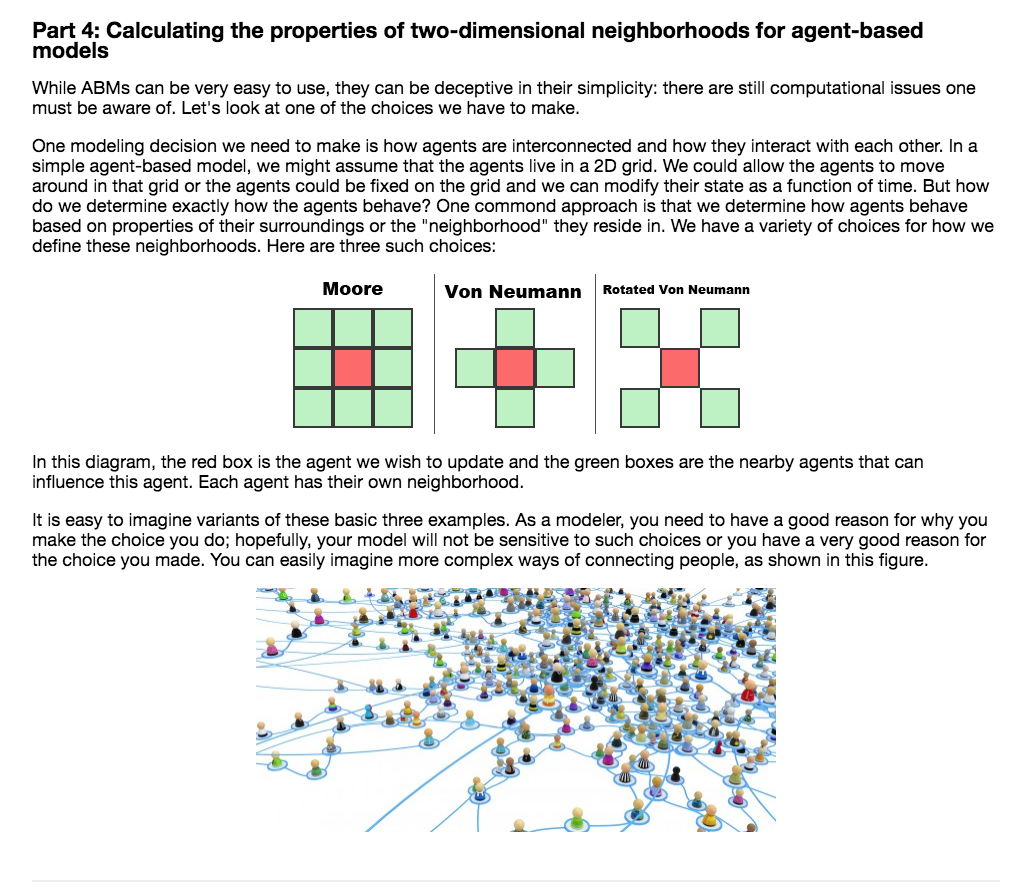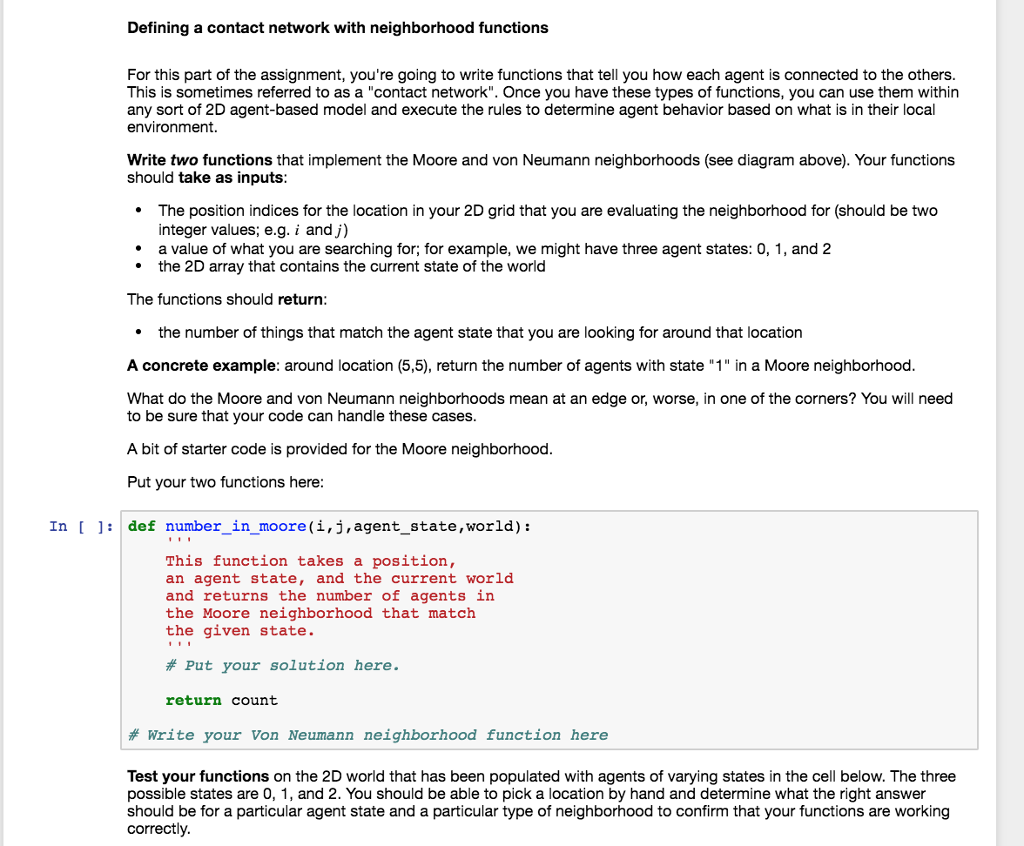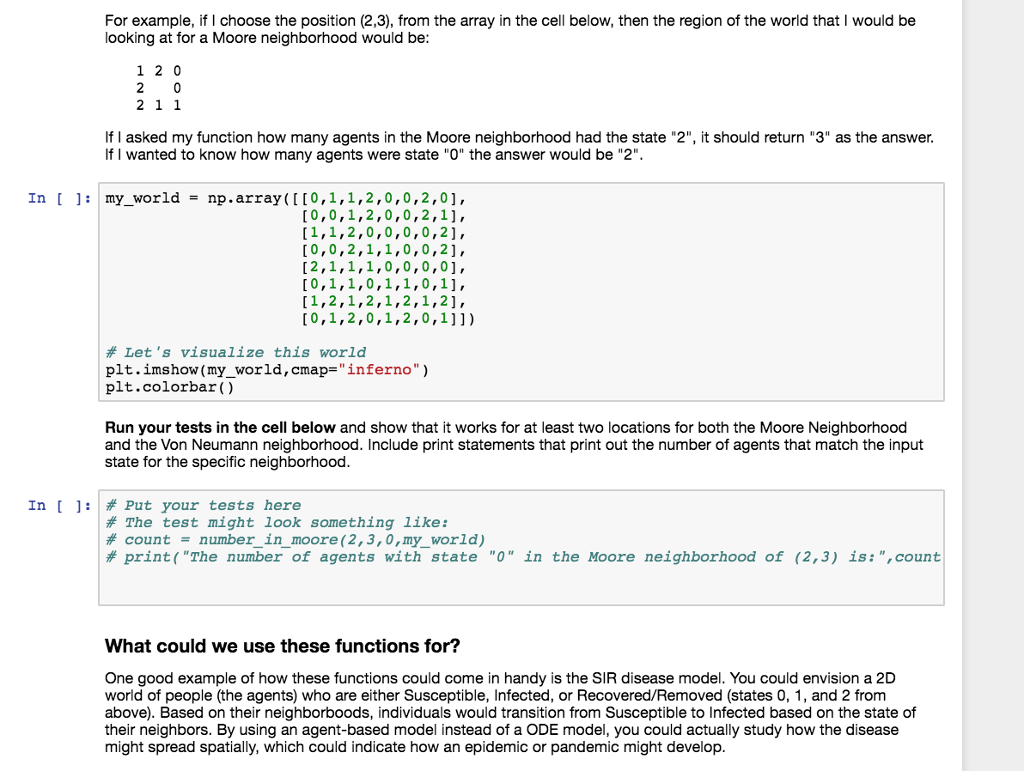Answered step by step
Verified Expert Solution
Question
1 Approved Answer
Please help. Use pyton please Part 4: Calculating the properties of two-dimensional neighborhoods for agent-based models While ABMs can be very easy to use, they


 Please help. Use pyton please
Please help. Use pyton please
Step by Step Solution
There are 3 Steps involved in it
Step: 1

Get Instant Access with AI-Powered Solutions
See step-by-step solutions with expert insights and AI powered tools for academic success
Step: 2

Step: 3

Ace Your Homework with AI
Get the answers you need in no time with our AI-driven, step-by-step assistance
Get Started

